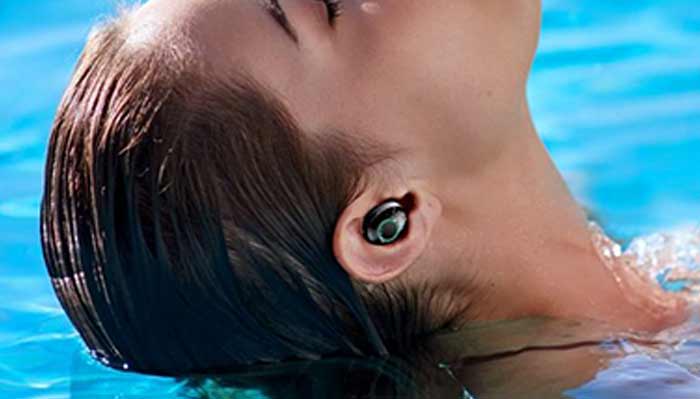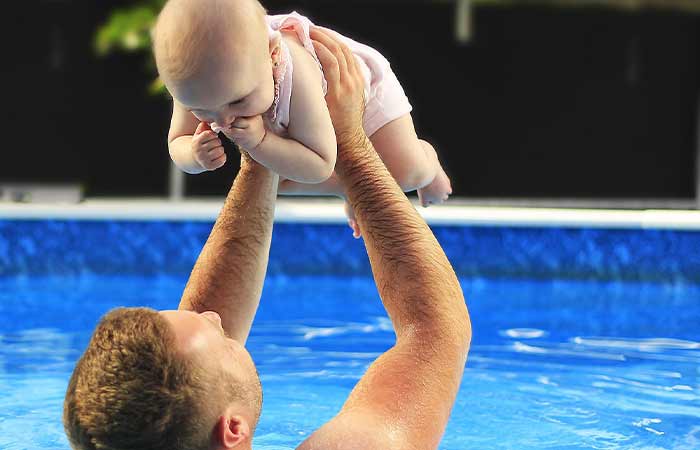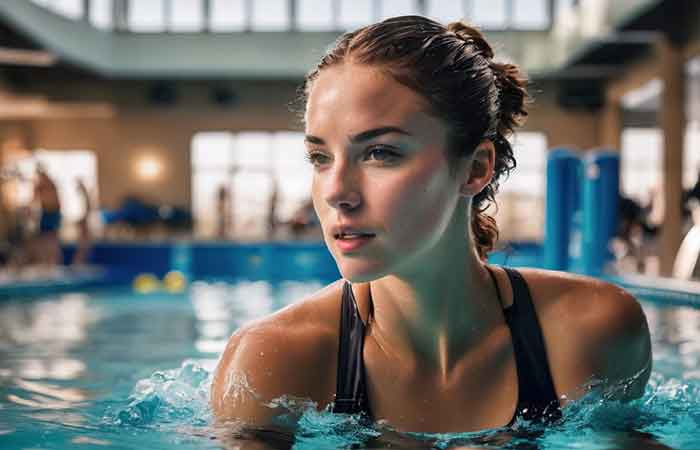Disadvantages of Swimming: Unmasking the Dangers & Risks!
Swimming is a low-impact, full-body exercise with extensive health and fitness benefits. However, spending time in pools, lakes, oceans and other bodies of water also presents potential drawbacks and hazards, including drowning, injuries, infections, chemical irritation, fatigue, sun damage, and financial and access limitations.
While the advantages of swimming far outweigh the disadvantages for most people, understanding the downsides allows you to maximize benefits while staying safe and healthy. This article explores the key risks, dangers, cons, and challenges of recreational and competitive swimming.
Risk of Drowning
Drowning is the most severe potential hazard of swimming and entering any body of water. According to the World Health Organization (WHO), drowning is the third leading cause of unintentional injury death worldwide, accounting for 7% of all injury-related deaths. There are an estimated 236,000 annual drowning deaths worldwide.
Children, males, and individuals with increased access to water are most at risk of drowning.
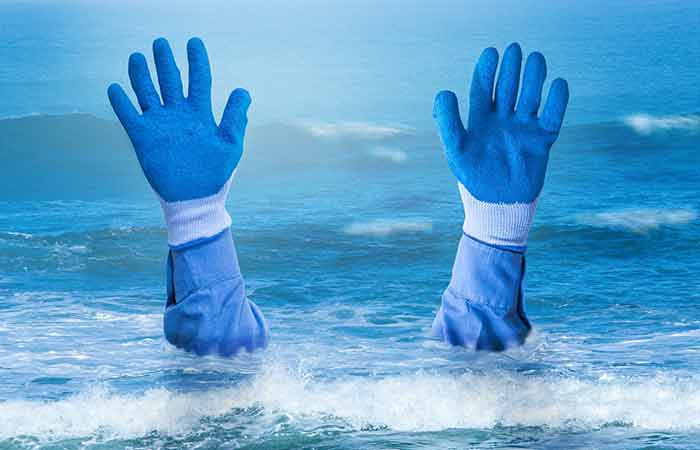
Reports indicate that the risk of drowning varies by age group and location. For infants under one year old, the highest risk is in bathtubs.
Among children aged 1 to 4, most drownings occur in private/home swimming pools. In the 5-14 age group, 40% of drownings happen in natural water, while 30% occur in public swimming pools.
For individuals 15 and older, over half of all drownings occur in natural open waters like lakes, rivers, or oceans. The fear of drowning is interestingly one of the reasons some people, including celebrities can’t swim.
Reasons people drown while swimming
Several factors contribute to the risk of drowning:
- Lack of Supervision: Inadequate supervision, especially for children, increases the risk significantly. Even experienced swimmers can face danger.
- Inadequate Swimming Skills: Weak or inexperienced swimmers are more vulnerable to drowning. It’s essential to learn to swim efficiently.
- Alcohol and Drugs: Substance use impairs judgment and coordination, leading to accidents in and around the water.
- Seizures or Medical Conditions: Individuals with certain medical conditions, like epilepsy, are at a higher risk of drowning.
Tips to Reduce the Risk of Drowning
To minimize the risk of drowning, follow these safety measures:
- Enroll in swimming lessons to acquire essential swimming and water safety skills.
- Avoid swimming under the influence of alcohol or drugs, as they impair judgment and coordination.
- Swim in supervised areas – Use pools, and beaches with lifeguards. Do not swim alone and if with kids, watch them closely.
- Use a buoyancy aid like a lifejacket (PFD), especially if you are a weaker swimmer or when swimming in open water.
Common Swimming Injuries
While low-impact compared to many sports, poor technique, repetitive leg movements, and arm and neck rotations involved in swimming make specific overuse injuries, especially in the shoulder, knees, and back, common among frequent and competitive aquatic athletes.
Swimmer’s Shoulder Injury
This is the most common swimming injury. Studies show up to 91% of elite swimmers report experiencing shoulder pain during their careers. It’s caused by poor technique and the high volume of repetitive overhead arm motions required mostly for freestyle and butterfly strokes.

Overuse injuries linked to shoulders include;
- Rotator cuff tendonitis or tears – Pain and inflammation of rotator cuff tendons. Impairs shoulder function.
- Impingement syndrome – Shoulder pain caused by repetitive pinching of rotator cuff tendons.
- Cartilage tears – Damage to the ring of cartilage (labrum) surrounding the shoulder socket. Requires surgery to repair.
Swimmer’s Knee
Also known as the Breaststroker’s knee, swimmer’s knee is second to swimmer’s shoulder in frequency. This injury is most common among breaststrokers, where the knees play an essential role in the kicking part of the stroke.
The force generated by the breaststroke kicking motion creates an unnatural lateral flexion in the knee, putting stress on ligaments, specifically the medial collateral ligament (MCL) sprain.
Swimmer’s knee is caused by overuse of the knee joints, and ligaments, as well as the use of improper or kicking technique.
other knee-related issues resulting from kicking include Patellofemoral pain and patellar tendonitis. Pain in the front of the knee, often just below the kneecap; inflammation of the tendon connecting the kneecap to the shinbone.
It is related to flip turns, pushing off the wall, and the dolphin and flutter kicks. The repeated, forceful contraction of the quadriceps (thigh) muscles loads and strains the patellar tendon, resulting in pain.
Neck Pain
Swimming can also harm the neck. Cervical muscle strains and nerve compression can develop from the continuous neck motion required during strokes (butterfly and breaststroke) that require you to raise your head above water.
In front crawl, rotating just the neck sideways instead of the whole body from the core can also strain the neck muscles.
Back Pain
Competitive swimmers and those who train extensively can develop back pain.
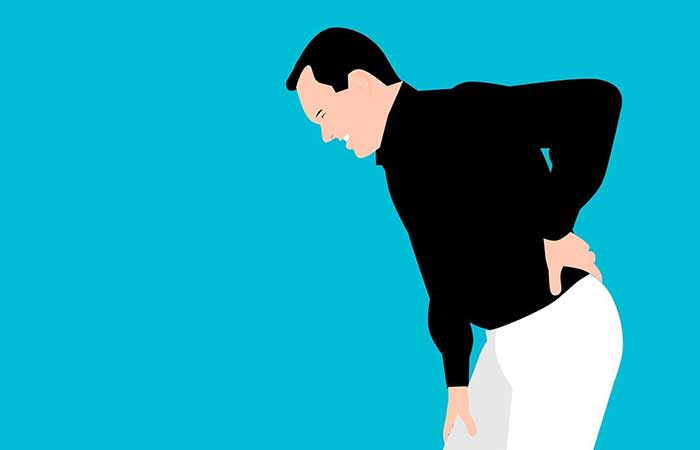
Causes include;
- Improper stroke techniques that hyperextend the spine.
- The high volume of training sessions.
- Forceful kick styles like the butterfly dolphin kick which compress the spine.
- Rotational nature of strokes like backstroke and butterfly twisting the back.
- Poor body alignment and postural imbalances (swimmer’s slouch).
- Preexisting back conditions aggravated by swimming movements.
The lower back or lumbar region tends to be the most affected. Pain can range from moderate discomfort to debilitating spasms.
Bicep Tendonitis
The repetitive stroking motion of the arm and shoulder causes this. Overusing your bicep tendon can result in micro tears in the tendon, which cause it to become painful and weak. You will often feel this pain in the front of your shoulder and down your arm.
Foot and Ankle Tendonitis
This is a less-common overuse injury that affects the tendons in the front of the foot and ankle due to the repetitive kicking motion in butterfly, backstroke and freestyle.
Tips Reduce Risk of Injuries
Proper stroke technique – Lessons and technique drills ensure efficient mechanics. Reduces overuse strain.
Strength training – Complement your swimming practice with dryland workouts that build shoulder, leg, arm, back and core muscles to improve endurance and stability.
Gradual training increases – Prevent overuse by slowly increasing volume.
Adequate rest – Avoid fatigue and overtraining. Rest days allow recovery between intense sessions.
Stretching – Loosens muscles and increases range of motion. Helps reduce injury risks.
Vary your strokes-Mix up all strokes to avoid straining the same muscles and joints.
Proper hydration and diet – Drink fluids and eat mineral-rich foods.
Dynamic warm-ups – Gets muscles ready for the exertion and loose afterward.
Cool-down sets – Easy laps after hard practices reduce delayed-onset cramps, relax your muscles and aid recovery.
Chlorine and Pool Chemicals Side Effects
While chemicals like chlorine and bromine are essential to sanitize pools, prolonged exposure to these disinfectants can negatively impact hair, skin, eyes, and lungs.
The extent of their effect depends on the specific chemicals used, the concentration, the swimmer’s sensitivity, and the total time spent in the water.
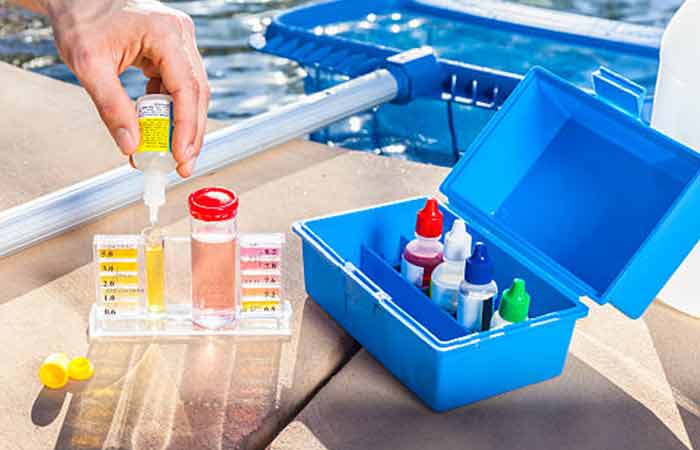
Skin Irritation
Skin irritation from chemicals like chlorine in pools is a common annoyance experienced by regular swimmers. Although not usually serious, you learn to manage it.
Chlorine strips away protective oils and moisture from the skin; leading to dryness, itchiness, rashes, and redness.
Competitive swimmers who train extensively experience more pronounced effects because their exposure is higher. Recreational swimmers have fewer problems.
Additionally, individuals with existing skin conditions like eczema and psoriasis may find chemicals irritate their skin more than others.
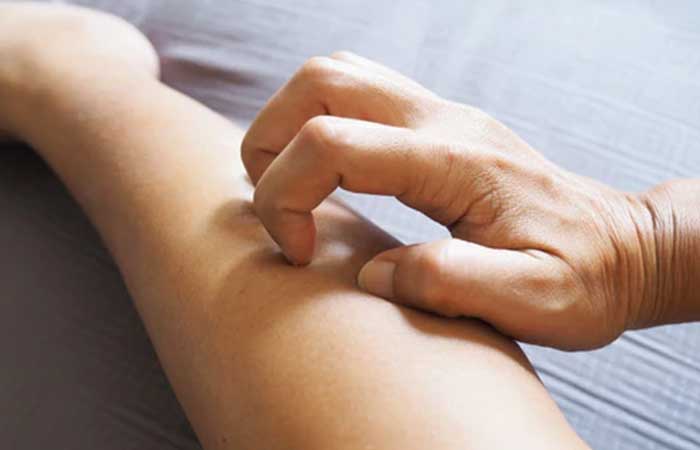
Hair Dryness and Damage
Chlorine strips away protective oils, leading to brittle, frizzy, dry hair. Color fading can also occur over time, resulting in a greenish tint from the buildup of copper.

Further Reading
Eye Irritation
Chlorine washes away tear film protecting eyes. It can cause redness, puffiness, and sensitivity to light.
Eye irritation is linked to;
- Pink eye (conjunctivitis) from infection or irritation.
- Burnt look from reddening of whites of eyes.
- Eye pain, tearing, and blurred vision are also possible.
Respiratory Risks
Inhaling chloramine compounds formed when chlorine mixes with organic matter can irritate the lungs and exacerbate problems like asthma.
Exacerbation of Existing Skin Conditions
The drying effects of chlorine can worsen eczema, psoriasis, and acne in those predisposed.
Ways to Reduce Chemical Effects
Rinse skin and hair with fresh water post-swim – Removes lingering chlorine.
Apply moisturizing lotions and hair products – Replenish natural moisture stripped by chemicals.
Use goggles – Consider prescription swim goggles for best vision and eye protection.
Use asthma medications as prescribed – Helps control exercise-induced symptoms.
Consider showering pre-swim – Saturates skin and hair so less absorption of chemicals.
Choose low-chlorine pools when possible – Reduces exposure to drying effects and irritation.
Risk of Infections-Swimming Health Hazards
Spending extensive time in pools, waterparks, lakes, rivers, and oceans can expose you to various infections and recreational water illnesses (RWI). This is common, mainly if the water contains contaminants.
Swimmer’s Ear (otitis externa)
This common ear infection occurs when water remains trapped in the ear canal, creating a moist environment for bacteria to thrive. It affects both children and adults. Signs include; itching, pain, and discharge.
Hot Tub Rash
This skin infection is caused by Pseudomonas aeruginosa, often found in poorly maintained hot tubs or inadequately disinfected water.
Diarrheal Illnesses
A gastrointestinal (GI) illness, diarrhea is the most commonly reported recreational water illness. While young kids are at high risk, it also affects adults.
It can be caused by germs such as Crypto (short for Cryptosporidium), Giardia, Shigella, norovirus, and E. coli. It is spread by swallowing water contaminated with fecal matter containing these germs.
Athlete’s Foot
This is a highly contagious fungal infection of the feet or toes from fungi that grow on wet pool surfaces like floors or locker rooms. It causes itching, peeling, and redness.
Yeast Infections
Warm, humid pool environments can promote the overgrowth of yeast naturally found on the skin, leading to infections like thrush or yeast infections.
Swimmer’s Itch
Also known as, cercarial dermatitis, swimmer’s itch is a common swimming hazard in lakes and oceans.
It appears as a skin rash caused by an allergic reaction to certain microscopic parasites(cercariae) that infect some birds and mammals. These parasites are released from infected snails into fresh and salt water.
When you come into contact with the water, the cercariae can burrow into the skin and cause an allergic reaction resulting in;
- Tingling, burning, or itching of the skin
- Small reddish pimples
- Small blisters
Legionella Infection
Legionella bacteria that live in hot tubs can cause pneumonia-like Legionnaires Disease if mists are inhaled and infect the lungs. Flu-like symptoms result.
Human adenoviruses (HAdVs) are a family of viruses that can cause respiratory illness, pinkeye, fever, and diarrhea. Though not common, this viral illness can be spread through contaminated pool waters.
Tips to Reduce Infections
Shower before and after – Rinse off germs and chlorine. Removes organisms before they enter the pool or infect you post-swim.
Don’t share items – Towels, goggles, and caps can spread germs. Assign each swimmer their own set.
Wear sandals in locker rooms – Protect feet from fungal infections on floors and benches.
Dry ears thoroughly – Removes trapped water after swimming. Preventative step for swimmer’s ear.
Notify pool staff about health issues – If ill, avoid swimming until recovered to prevent spreading sickness.
Avoid swimming if cut or scraped – Open wounds risk infection. Wait until healed to swim.
Sun Exposure Dangers
Outdoor swimming leads to excessive UV and UVB radiation exposure which risks:
- Painful short-term sunburns, especially with prolonged exposure during peak sun hours. Water reflects and intensifies burns from UV radiation
- UV rays degrade collagen and elastin leading to long-term skin damage like wrinkling, age spots, and hyperpigmentation.
- Eye damage causing cataracts. Retina and cornea burns can also occur.
- Compromised immune function and cell mutation raise skin cancer likelihood.

Sun Protection Tips
- Apply broad-spectrum, water-resistant sunscreen with SPF 30 or higher. Reapply every 80 minutes.
- Wear protective swim shirts, hats, and sunglasses. Less skin exposure reduces UV damage.
- Avoid midday sun when rays are strongest between 10 am and 4 pm.
- Swim in covered, shaded pools when possible. Outdoor early or late in the day is better.
- Seek shade between swims – Trees, umbrellas, and buildings can provide relief from constant sun.
- Consider UV-blocking clothing – Provides excellent sun protection for frequent swimmers.
Fatigue and Tiredness
While a sign you are getting a thorough workout, the intense exertion required by swimming leads to acute fatigue both during and after swimming.
Contributing factors:
- Full body engagement for sustained periods
- High heart rate and cardiovascular demands
- Repetitive muscle contractions
- Potential dehydration contributing
Proper rest between swimming sessions, adequate nutrition and hydration, and avoiding overtraining are vital to managing issues with swimming-related exhaustion.
Further Reading: Why does Swimming Make you Tired and Sleepy
Dehydration
Strenuous swimming can lead to considerable fluid loss through sweat. But the cooling effects of water disguise this sweating.
Dehydration causes:
- Fatigue, weakness, dizziness, and impaired performance
- Muscle cramps, spasms, and shakiness
- Impaired cognitive functions like focus and coordination
- Risk of exertional heat injury
Stay hydrated by frequently drinking water or sports beverages before, during, and after swimming. Notice early signs like excessive thirst and dark urine. Remember to take occasional breaks to rehydrate.
Drink electrolyte beverages to replenish minerals lost in sweat and eat fruits and veggies with high water content.
Poor Posture & Muscle Imbalance
The positioning of your body in some strokes(freestyle and butterfly) and repetitive arm and leg movements can contribute to poor posture, muscular imbalances, and reduced spinal stability over time if not adequately addressed.
Swimming primarily utilizes the upper back, shoulder, and arm muscles to power strokes, often at the expense of other areas. This can lead to overdevelopment and, in some cases stiffness, in those muscle groups. Without counter-exercises, the chest, abs lower back, and even legs become tight, underdeveloped, and weak in comparison.
If you look at a group of swimmers, you’ll certainly see many hunched over with rounded shoulders, a poor way of standing/sitting commonly referred to as “swimmer’s slouch or posture.”
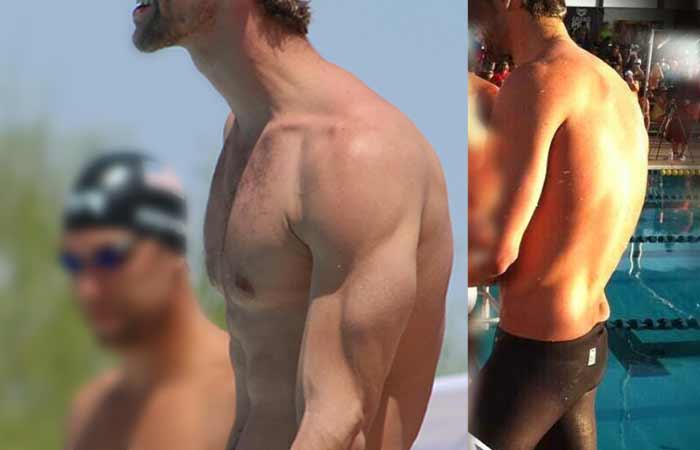
This results from overdeveloped back muscles that lengthen to compensate for the tight, under-developed chest muscles, gradually pulling some swimmer’s pose forward into a hunched position. Swimmer’s slouch increases drag, slowing swimmers down. Studies indicate that it also raises injury risk.
Further research also indicates that swimming increases the risk of trunk asymmetries and hyperkyphosis.
Another set of muscle groups that can suffer from imbalance are quads (front-thigh muscles) and hamstrings (back-thigh muscles). Most swimming strokes are extremely quad-dominant in lower body movements. Kicking, pushing off the wall, and diving all build strength in the quads, leaving out the hamstrings.
Tips to Improve posture and muscle balance
- Engage in targeted strength training for any lagging muscle groups out of the water.
- Stretching is one of the best remedies, especially for swimmer’s slouch. In addition to shoulders, stretch your arms, hips, legs, etc. regularly.
- Regular dryland exercises both body-weight or weights can develop a balanced musculature. Lower body work like squats and deadlifts builds hip strength to support the spine while exercises like rows, bench presses/push-ups, and shoulder presses strengthen the upper body.
- Pilates improves overall postural alignment and core stability.
- Chin tucks strengthen the neck and bring the head back into alignment.
Being mindful of posture and actively correcting it during swimming can also ingrain better positional habits over time.
With proper dryland training and postural awareness, you can overcome postural imbalances and muscular asymmetries, improving biomechanics in and out of the pool.
Limited Bone Strength
While it is true that swimming is a low-impact exercise that can increase aerobic capacity and lean body mass, the lack of impact can be a disadvantage when it comes to bone strength. There’s evidence that spending several hours in the pool has no positive effects on bone mineral density (BMD)
Unlike weight-bearing exercises like strength training, the buoyancy of water eliminates the heavy impact on bones, which usually promotes increased bone strength (bone density and quality). Over time, the lack of impact can potentially lead to lower bone mineral density and weaker bones.
This makes swimmers more susceptible to osteoporosis and bone fractures later in life than athletes and exercisers in high-impact activities. Studies show swimmers tend to have lower bone density than runners or even sedentary individuals of the same age.
To mitigate this swimming disadvantage, experts recommend you incorporate cross-training with weight-bearing exercises like jogging, plyometrics, and strength training. This provides the impact beneficial for building stronger bones to complement swimming.
Adequate intake of bone-strengthening nutrients like calcium and vitamin D is also essential. Michele Tuttle, a sports dietitian and a US Masters Swimming-certified Level 2 coach also recommends probiotic-rich foods.
With proper precautions, swimmers can still reap the many cardiovascular and muscular benefits of swimming while supporting bone health through supplemental impact loading activities.
Muscle Cramps
The athletic demands of swimming can lead to debilitating muscle cramps, a common issue experienced by swimmers of all levels.

Swim-related cramping occurs when muscles involuntarily contract and spasm painfully, often in the legs and feet, during or after swimming. It manifests as visible hard knots in the muscle tissue.
Contributing factors include overexertion, poor conditioning, freezing waters, electrolyte/mineral imbalance, and dehydration
Preventative measures include staying hydrated, supplementing electrolytes, dynamic warm-ups/cool-downs, and building muscular strength and endurance.
If you get cramps while swimming, get out of the water, gently stretch and massage the cramped muscle until it relaxes. While painful, muscle cramps are easily managed with proper preparation.
Technique Learning Curve
Mastering efficient swimming biomechanics poses a huge challenge, especially for new swimmers. It requires extensive time and practice to engrain as second nature.
Some key skills that are difficult to master include;
- Timing & coordinating breathing patterns in the different strokes
- Achieving ideal arm entry, pull, exit, and recovery
- Maintaining proper head, hip, and spinal alignment
- Developing proper flutter kick cadence and strength, correct whip and dolphin kick techniques
- Turning and pushing off the walls with good form
Without the above skills beginners will often accidentally swallow water when breathing, experience sinking legs because of poor body position, or find it hard to move from one place to another because of inefficient use of arms and legs.
Lessons, videos, drills, and focused practice all help shorten this learning curve. Being patient is key – slight improvements add up over time.
Swimming can be Expensive.
While it is affordable to swim laps casually, competitive and high-level recreational swimming can get quite costly.

Pool membership fees– access to pools, especially Olympic-size pools, often requires membership fees ranging from $35-$150+ per month.
Instruction, coaching, and classes-Private swim lessons average $30-60 per session. Joining swim clubs or swim teams has registration fees and recurring coaching costs.
Equipment/gear expenses add up– competitive swimmers require equipment like tech suits, goggles, caps, fins, paddles, kickboards, etc. These items are very pricey for top quality. Basic recreational swim gear is more affordable.
Travel costs– travel to competitions, camps, clinics, etc. can get expensive. This includes transportation, lodging, food, and more. Travel is almost mandatory for aspiring elite swimmers.
So, while basic recreational swimming is very affordable, pursuing the sport competitively requires significant financial commitment. You will have to budget accordingly. Here are some budgeting tips to manage the cost of swimming:
- Shop smart: Look for deals and discounts on swim gear and equipment.
- Use community pools: Consider using local public pools, which often have lower fees.
- Group lessons: Group swimming lessons are generally more cost-effective than private instruction.
Unhygienic and Hazardous Public Pools
Some public pools contain inherent safety and sanitary risks requiring vigilance. These include:
- Germ transmission through shared surfaces and crowded water during peak times
- Risk of collision with other swimmers or objects from crowded lanes and poor visibility
- Slippery surfaces around the pool area and wet locker room floors can lead to falls and injuries
- Pool water fouling through urination, defecation, or contaminants like dirt, cosmetics, etc.
- Crowd overcapacity issues during peak hours raise safety concerns
- Risk of injury from diving into shallow/unknown depth
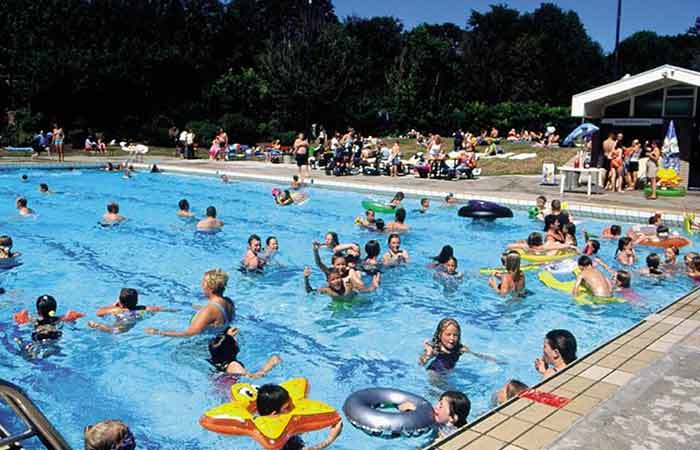
Tips to stay safe in public pools
These issues can be mitigated by ensuring proper operation and monitoring of public pools. But patrons must also exercise caution including:
- Following all posted rules, notifications, and lifeguard instructions
- Showering thoroughly before and after swimming
- Accompanying inexperienced children and weak swimmers at all times
- Maintaining distance from other swimmers
- Walking and entering slowly using ladders/steps properly and gripping surfaces carefully
- Checking pool clarity and cleanliness
- Put on the right swimming attire for instance use swim diapers for young kids
Open Water Swimming Challenges
While idyllic in imagery, swimming outdoors in oceans, lakes, and rivers poses some inherent challenges to manage compared to pools.
- Estimating distance and pace– Without lane markers, it isn’t easy to accurately gauge how far you’ve swum or your pace. Easy to accidentally overexert.
- Unpredictable conditions– currents, tides, waves, wind, and weather can change suddenly, making open water unpredictable.
- Marine life encounters– interactions with local marine life like sea lice, jellyfish, and sharks in oceans require caution.
- Water quality– natural waters have an increased risk of contamination from bacteria, chemicals, parasites, and algae.
- Limited visibility– murky conditions in lakes and oceans limit underwater visibility. Easy to get disoriented.
- Boat traffic– boats, jet skis, and other watercraft can make open water swimming hazardous in some areas.
The risks can be managed with proper precautions like swimming in groups, avoiding poor conditions, and learning about local marine life. But open water requires more vigilance than pools.

Competitive Swimming Drawbacks
In addition to the general swimming disadvantages listed so far, participating in competitive swimming has some specific drawbacks to be aware of, including;
- Time commitment – 4+ hours daily of training plus travel time
- Intense training early morning practices and other late in the day can lead to burnout and injuries
- Social life impact – Little free time outside swimming
- Uncomfortable swimwear- Tight, revealing technical suits required
- Expensive gear/travel – Significant costs
- Pressure-The competitive environment can be stressful, leading to performance anxiety and burnout.
- Lack of variety- Over time, some individuals may find swimming repetitive or monotonous, leading to boredom or decreased motivation to continue swimming regularly.
To curb these drawbacks, structure your training to avoid burnout. It is also vital to prioritize mental well-being alongside physical training.
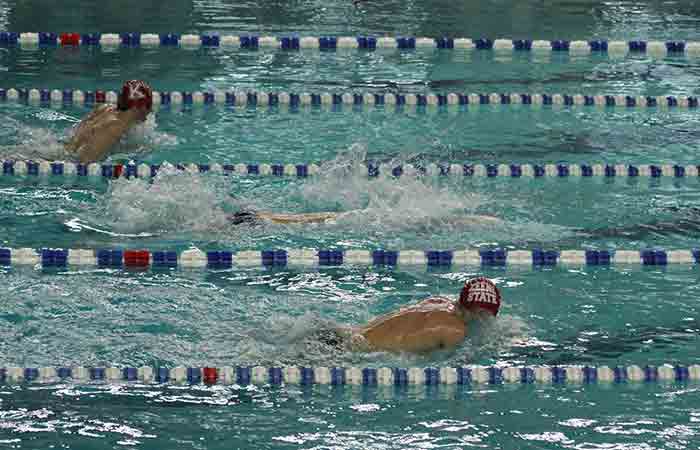
Cold Water Swimming Disadvantages
While open water swimming in cold temperatures is growing in popularity for its health benefits, it has some inherent risks to manage.
Hypothermia– prolonged exposure to freezing water can cause core body temperature to drop dangerously low. Signs include shivering, slurred speech, and confusion.
Cardiovascular stress– sudden immersion in frigid water causes heart rate and blood pressure to spike. Those with pre-existing heart conditions are at increased risk.
Loss of muscle control– the body loses heat, and muscles become stiff and difficult to control voluntarily. This impairs swimming ability and coordination.
Shock-Cold water can cause shock reactions.
Increased hunger-cold water can ramp up your desire for food.
Cold Water Swimming Tips
- Acclimate slowly – start with short swims before progressing to longer durations.
- Wear thermal protection like wetsuits to retain body heat.
- Beware of hypothermia signs– exit water at first symptoms like intense shivering.
- Check with a doctor first if you have any heart or circulation conditions.
Access Constraints
While swimming only requires access to a body of water, in reality, consistent year-round access to swimming facilities can be challenging depending on where you live.
Limited Pool Access
Pools can be scarce in certain areas and communities. Those that exist may be small, crowded, require membership/usage fees or have prime lap swim hours booked up.
Seasonal Availability
Outdoor pools are generally only open during warmer months. Some areas have very short outdoor swimming seasons depending on climate.
On the other hand, indoor spools lack natural light and a connection with nature. Unlike outdoor pools, indoor facilities lack the opportunity to swim under the open sky, surrounded by the beauty of the natural environment.
This can limit the ability to swim regularly. Traveling greater distances to pools is sometimes the only option.
Final thoughts…
While the considerable benefits of swimming are apparent, some risks and disadvantages accompany this water sport.
By understanding the drowning risks, overuse injury potential, infection hazards, sun damage dangers, chlorine irritation, finance, and access constraints, among other issues, you can take informed precautions. In turn, this will allow you to fully enjoy the water while proactively addressing any of the associated cons.
With sensible preparation for the disadvantages, swimming is a gratifying lifetime activity with positives extending well beyond its few deterrents.



